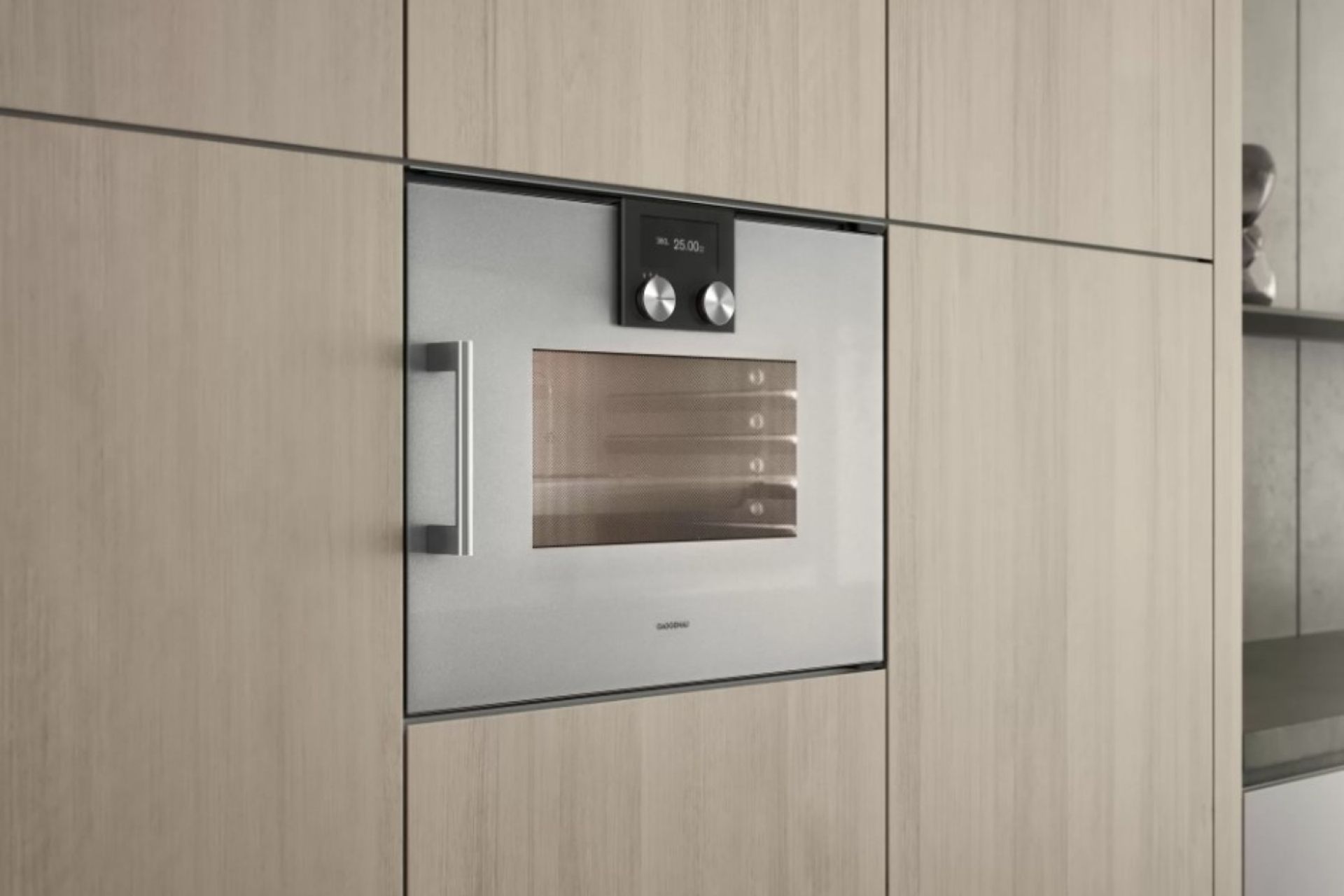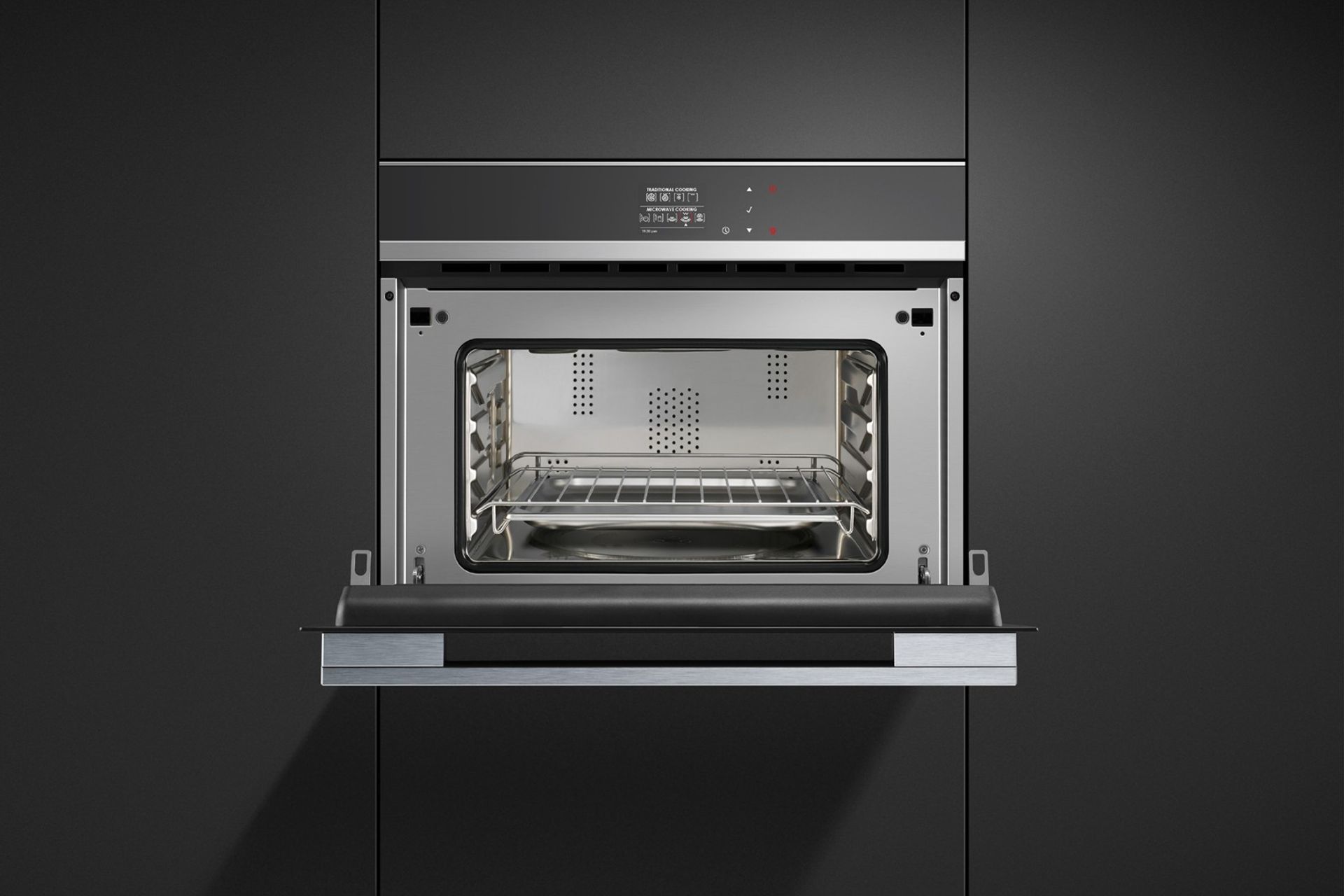Are combination microwave ovens really any good?
Written by
28 May 2024
•
8 min read

When judging a kitchen appliance, like a combination microwave oven, it's important to look closely at its broad traits but also equally important to keep context in mind. For example, what might be good for one homeowner and household, might not be as good (or even bad) for another. Because of this, we’ve examined the advantages and disadvantages of the combination microwave oven, followed by a series of questions to help you decide whether it's the right choice for you.
What are combination microwave ovens?
Before getting started, it's important to describe exactly what a combination microwave oven is, given it's still a relatively new product that some might not be familiar with.
A combination microwave oven, or combi oven, is a type of kitchen appliance that combines the functionalities of a standard microwave with additional cooking methods like convection heating, grilling and/or steaming. Their versatility, and the fact they can effectively perform the role of two appliances, have seen them steadily rise in popularity, saving time and space in the kitchen.

Advantages of combination microwave ovens
Having described what combination microwave ovens are, we can now look at some of the benefits that have emerged over recent years.
Versatility
Probably the most appealing trait of a combination microwave oven is its versatility. Its ability to offer and switch between different cooking tasks, from microwave cooking to steam or convection cooking, allows you to use it for a wide variety of dishes. This means it becomes a well-used appliance in the kitchen and an important part of your culinary routines.
Efficiency and convenience
The versatility just mentioned also makes it an extremely efficient appliance for several reasons. For instance, one combination microwave oven can do the job of multiple alternatives meaning you'll save invaluable space in the kitchen (more on this later). You can also use them specifically for the cooking task at hand, like quickly reheating food with the microwave function or roasting chicken with the convection setting, as opposed to using an appliance for something it's not designed for, like reheating leftovers in an oven.
Saving space
The space-saving aspect, touched on a few times already, is huge and cannot be understated. Kitchens can be cramped and cluttered places, especially in small homes, so any appliance that eliminates the need for multiple others is incredibly useful. On top of this, combi microwave ovens tend to be smaller in size, ideal for a countertop or wall space, compared to traditional freestanding ovens that have a relatively big footprint.
Advanced features and functionality
As a modern appliance, combi microwave ovens have the benefit of boasting some truly advanced features. For example, many models include sensor cooking technology which automatically adjusts power and cooking times based on the humidity and temperature of the food being cooked. Many also offer smart connectivity, giving users remote control via smartphone apps. Multi-stage cooking, pre-programmed recipes, inverter technology, intuitive touch controls — these are just some of the additional features that you can expect to find.
Related article: Must-have appliances to furnish a modern kitchen in New Zealand
Disadvantages of combination microwave ovens
As with any appliance or product, there are some potential drawbacks you should be mindful of before making a final decision.
High upfront cost
A combi microwave oven generally has a higher upfront cost compared to a standard microwave or even a traditional oven. You can find a small, entry-level option for around $500 but that price can rise to upwards of $5,000 for a large deluxe 47L model with the latest features. On average, a mid-range option will probably cost you around $2,000. However, you should bear in mind that it may save you from buying one less appliance overall which is fairly significant.
Complexity
As an advanced, multi-functional kitchen appliance, a combination microwave oven can sometimes have a bit of a steep learning curve for some. While its control panels are intuitively designed, they will undoubtedly require time and effort to understand them fully. This will be more of a challenge for some than others but knowing this from the start will mean you'll be better prepared for it.
Limited capacity
The same thing that makes combination microwaves an asset (their smaller size), can also be a drawback in some situations. Those who need to cook large quantities of food at once, for example, may benefit more from a traditional convection oven with a bigger baking space. Also, those who regularly cook fried foods might prefer an air fryer instead as it has been specifically designed for that exact cooking method.
Cleaning and maintenance
Combination microwave ovens can be harder to clean and maintain than microwaves because they have more components, like those for convection and grill functionalities. These components include things like grill racks and fans that you would find in a traditional oven. They also collect more grease and food splatters from these grilling and roasting functionalities, again which you wouldn't have in a microwave. The maintenance required is essentially on par with an oven as a like-for-like comparison.

Questions to ask yourself before deciding
Now that we've covered the pros and cons of combi microwave ovens, you'll hopefully have a much better idea of what they can and cannot do. The next challenge is figuring out whether it’s right for you and the following questions are good ones to ask yourself to help you decide.
What types of cooking functions do you use the most?
This question relates to the types of dishes you cook and the cooking methods you use in any given week. Do predominantly bake, roast and grill dishes? Are you reheating leftovers regularly? Do you often steam food? A combi microwave oven comes to the fore when you use all its functions frequently. Otherwise, you're essentially paying a premium for features you don't need.
How much space do you have in your kitchen?
If you have a small kitchen then a combi microwave oven will probably be more beneficial to you as they are generally smaller in size and can serve the role of two appliances in one. If you have a large kitchen, this factor probably isn't as significant, however, if you are looking to create a minimalist look, then a combi microwave oven will help you declutter your space.
How many people are you regularly cooking for?
A combination microwave oven usually has a capacity of around 30L - 50L which is a little bigger than a microwave oven at around 20L - 40L but smaller than a freestanding oven which can be anywhere from 60L - 100L. The combi microwave oven is a good size in which you can comfortably manage a roast chicken but you won't be able to fit another tray underneath for baked potatoes like you can in a freestanding oven.
What is your budget?
Combination microwave ovens are generally more expensive than standard microwave ovens and traditional ovens so it does pay to think about whether you'll really make use of it. If buying one means you don't have to buy a separate microwave and oven, then it's a much more balanced financial decision. However, if you want one with all the latest features, it will be a fairly sizeable investment.
Are you good with technology?
As with any new and advanced, multi-functional products, there can be a bit of a learning curve when it comes to operating them. If you're a tech-savvy individual, this will not be an issue at all. However, if you are not, or there are others in the household that aren't, it could take them a while to get used to it.
How important is convenience and efficiency to you?
This is a crucial point to think about as a combi microwave oven is a cooking appliance that offers you convenience and efficiency when it comes to space, time and power consumption — which is largely what you're paying a premium for. For those with particularly busy lives, either as individuals or families, the qualities of a single appliance with multiple cooking modes may be well worth a little more to you, especially in the long run.
Is a combination microwave oven a good choice for you?
After a thorough examination of the combination microwave oven and a series of questions to ask yourself, you're hopefully in a great position to make an informed decision. As we said at the beginning, it isn't really a question about combination microwave ovens being good or not, but understanding whether they are the right choice for you. Given all their great qualities, the answer to that will be "yes" more often than not.
Browse the latest combination ovens in the market on ArchiPro
